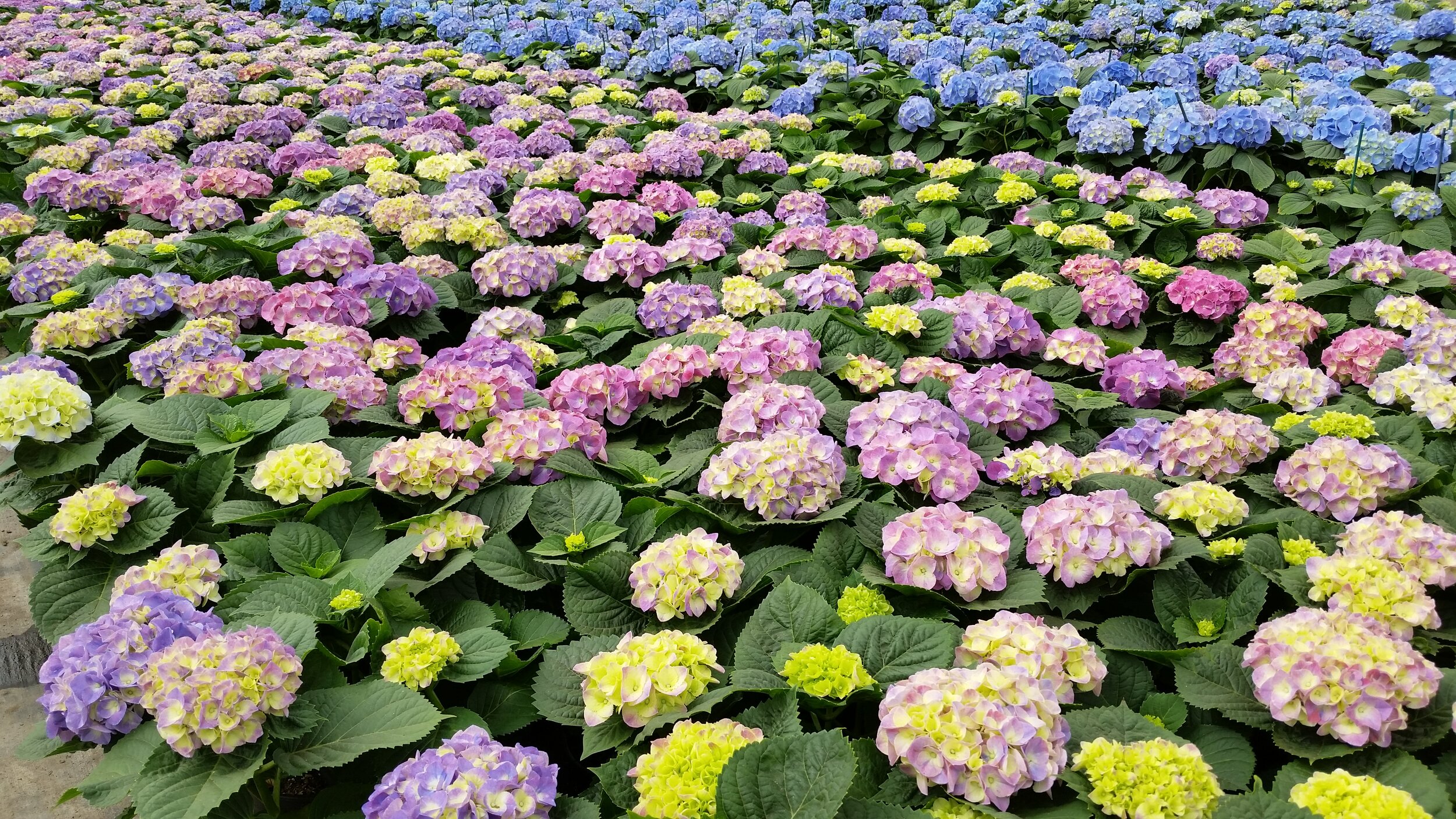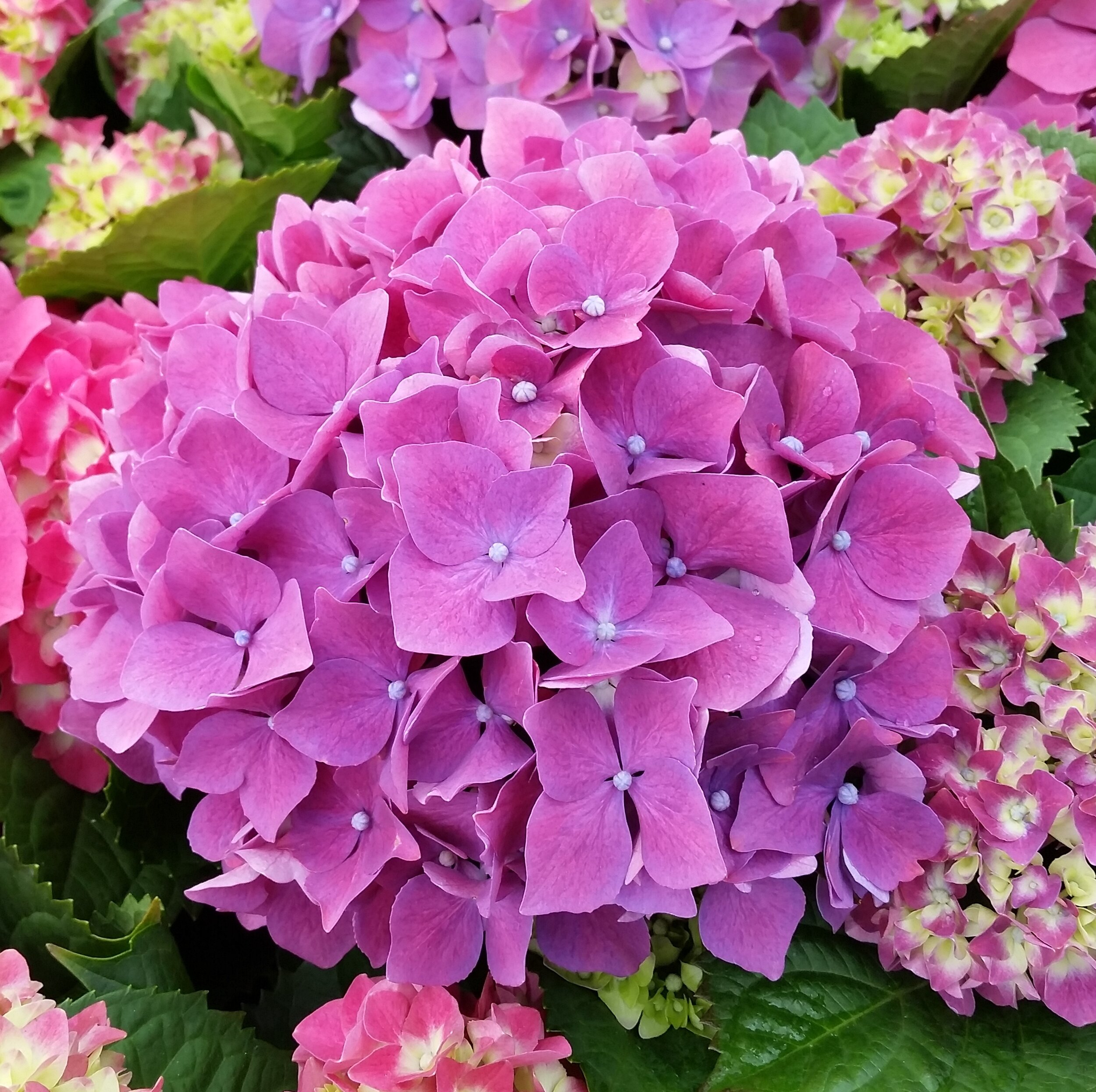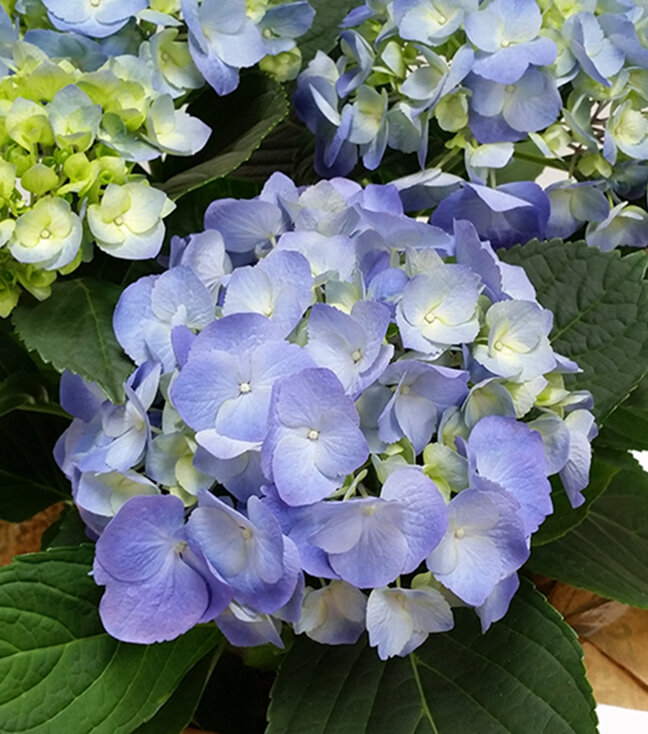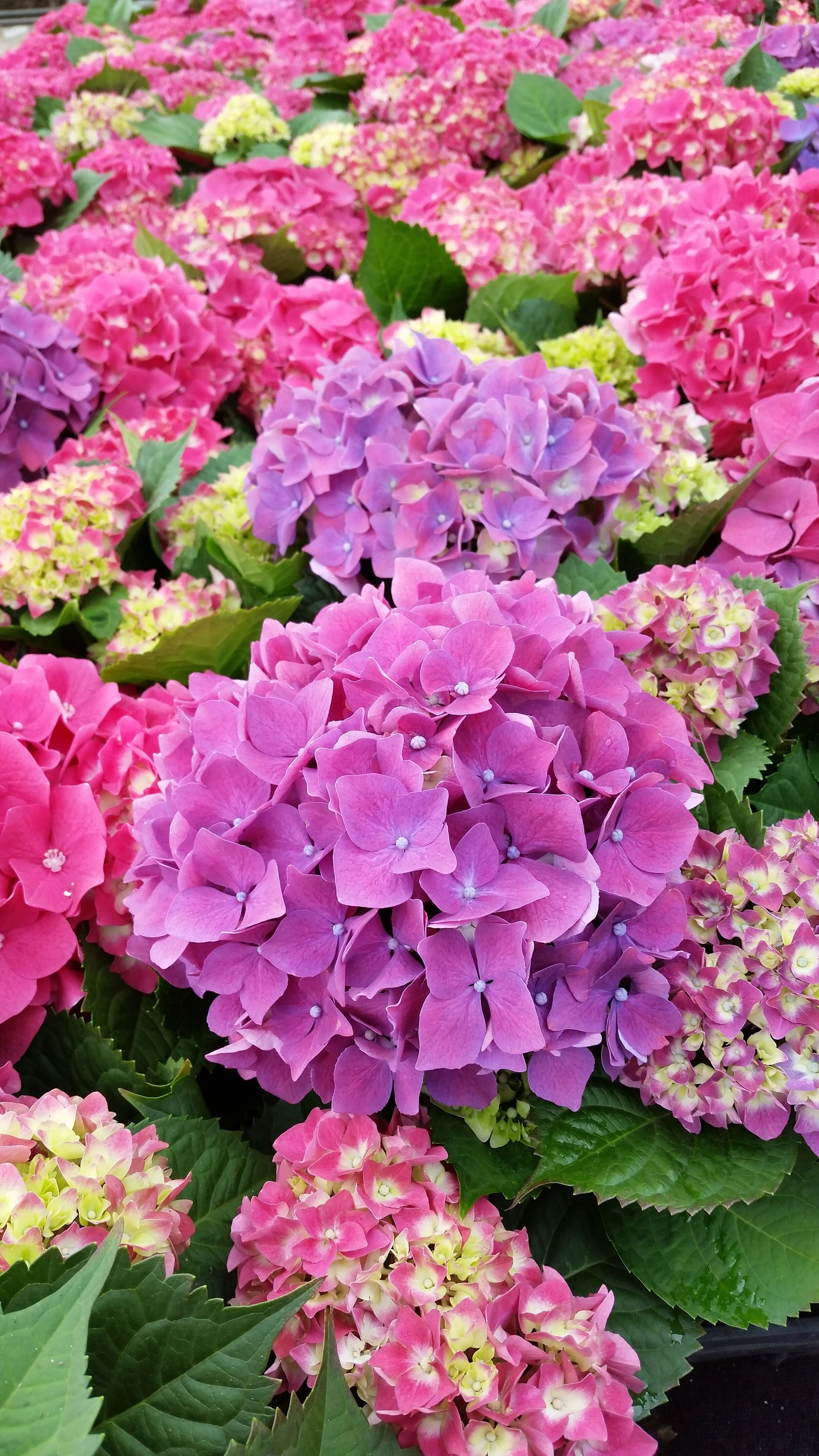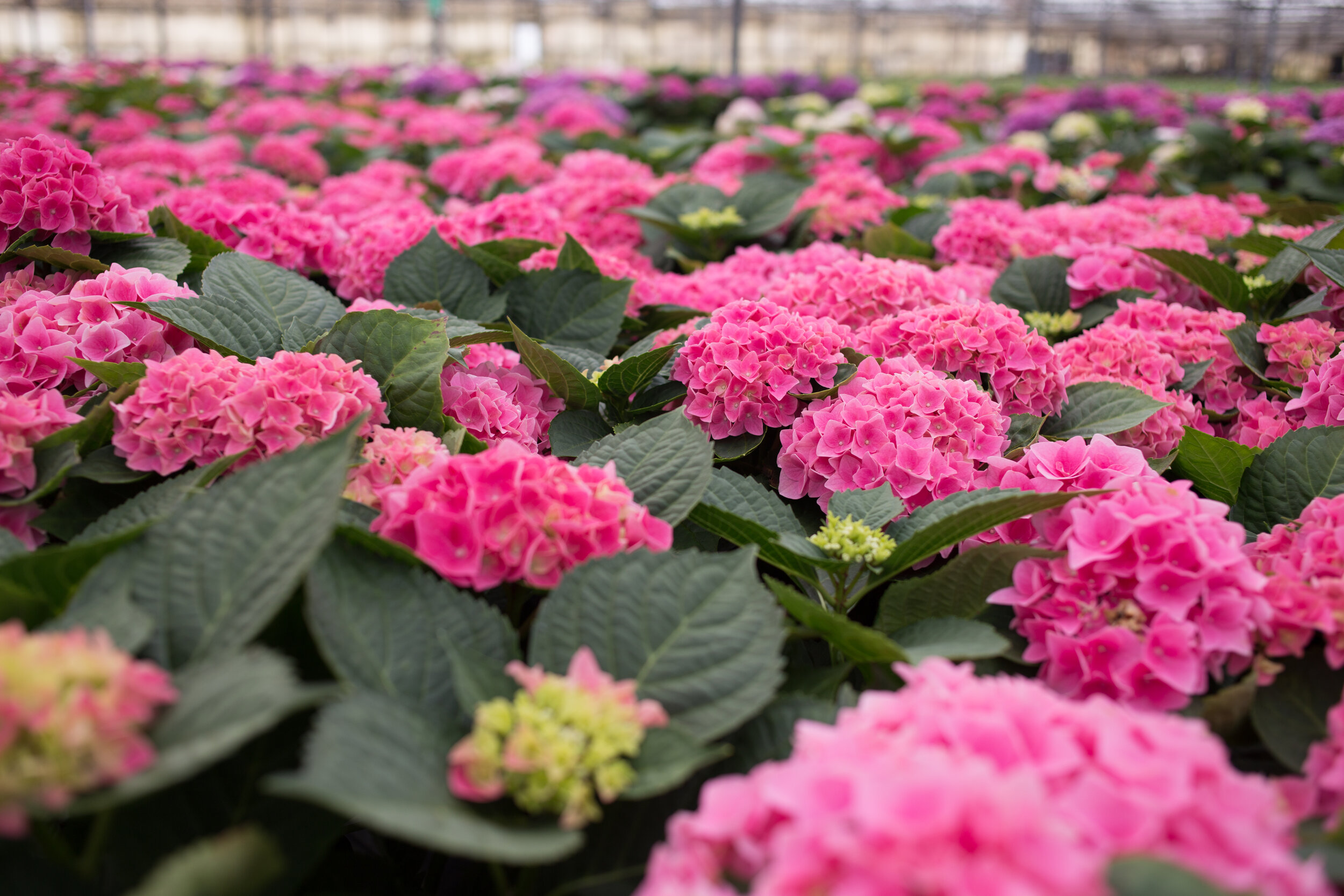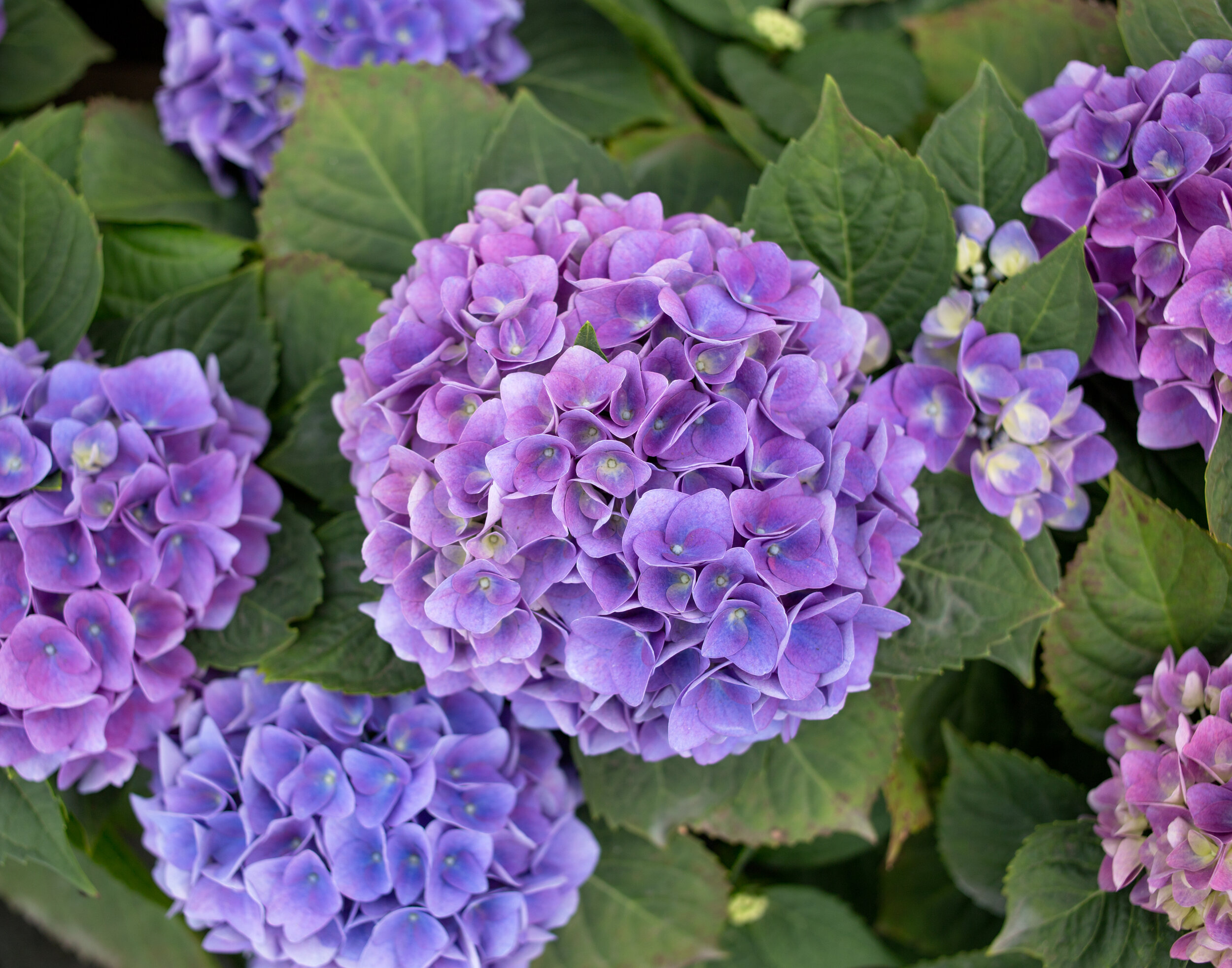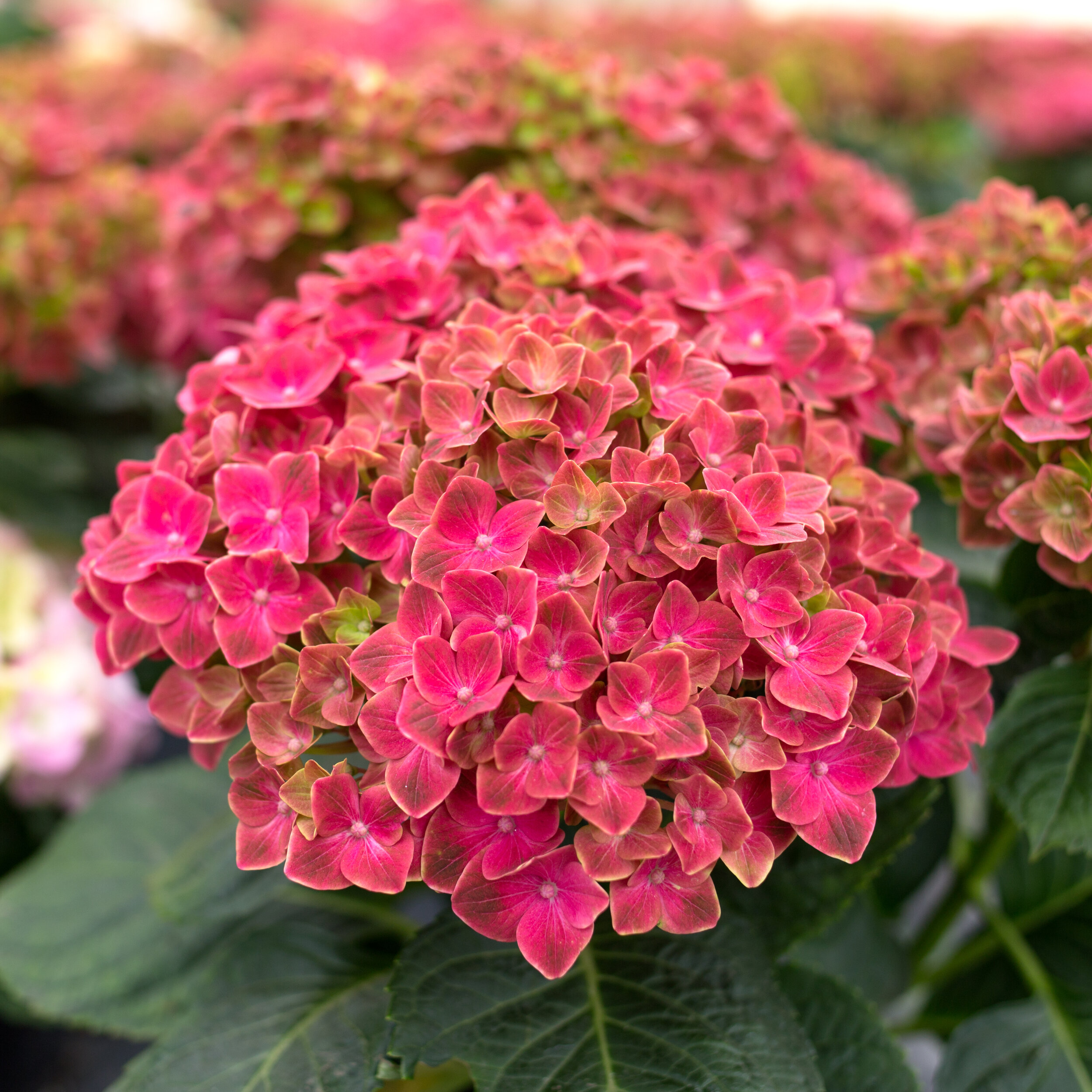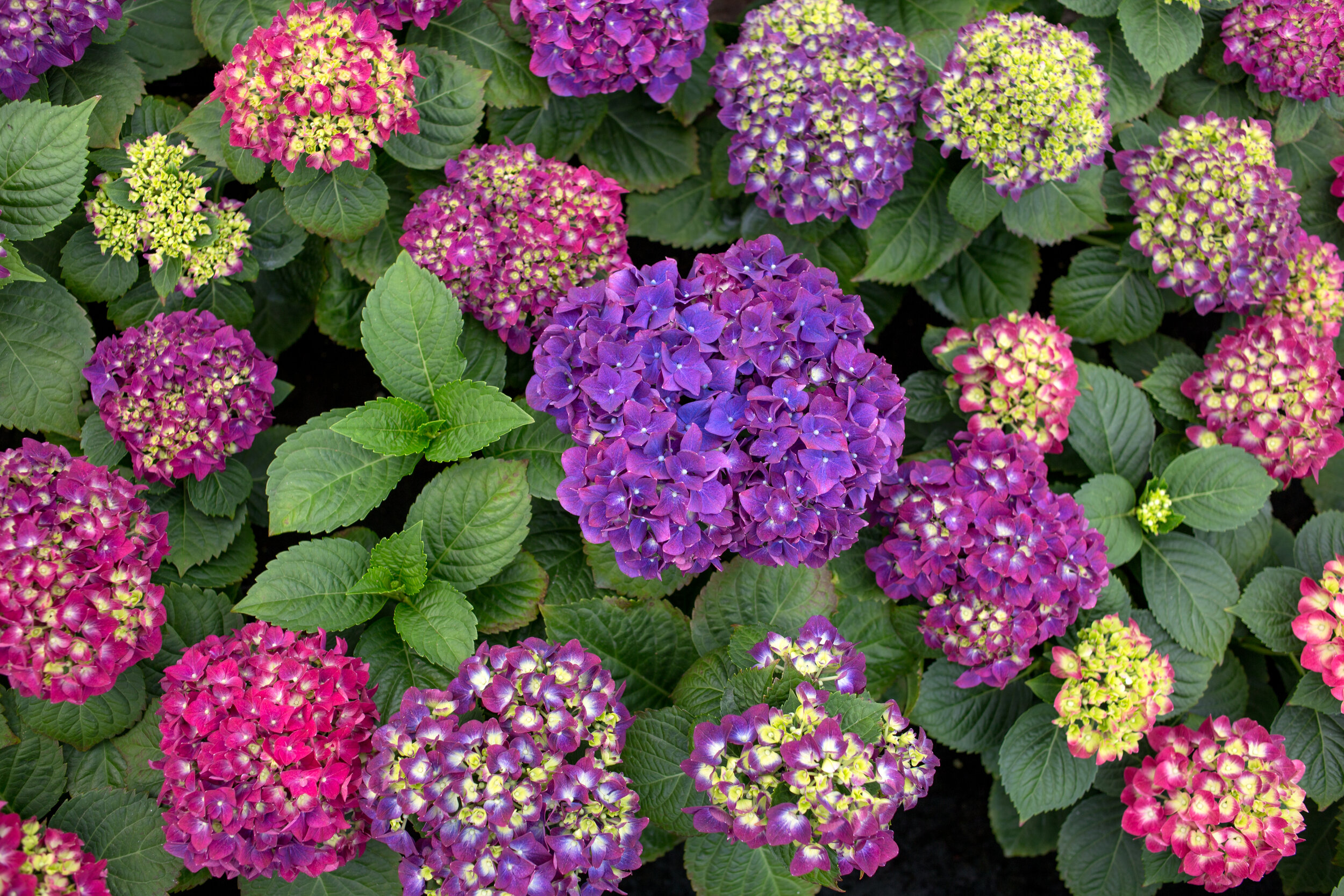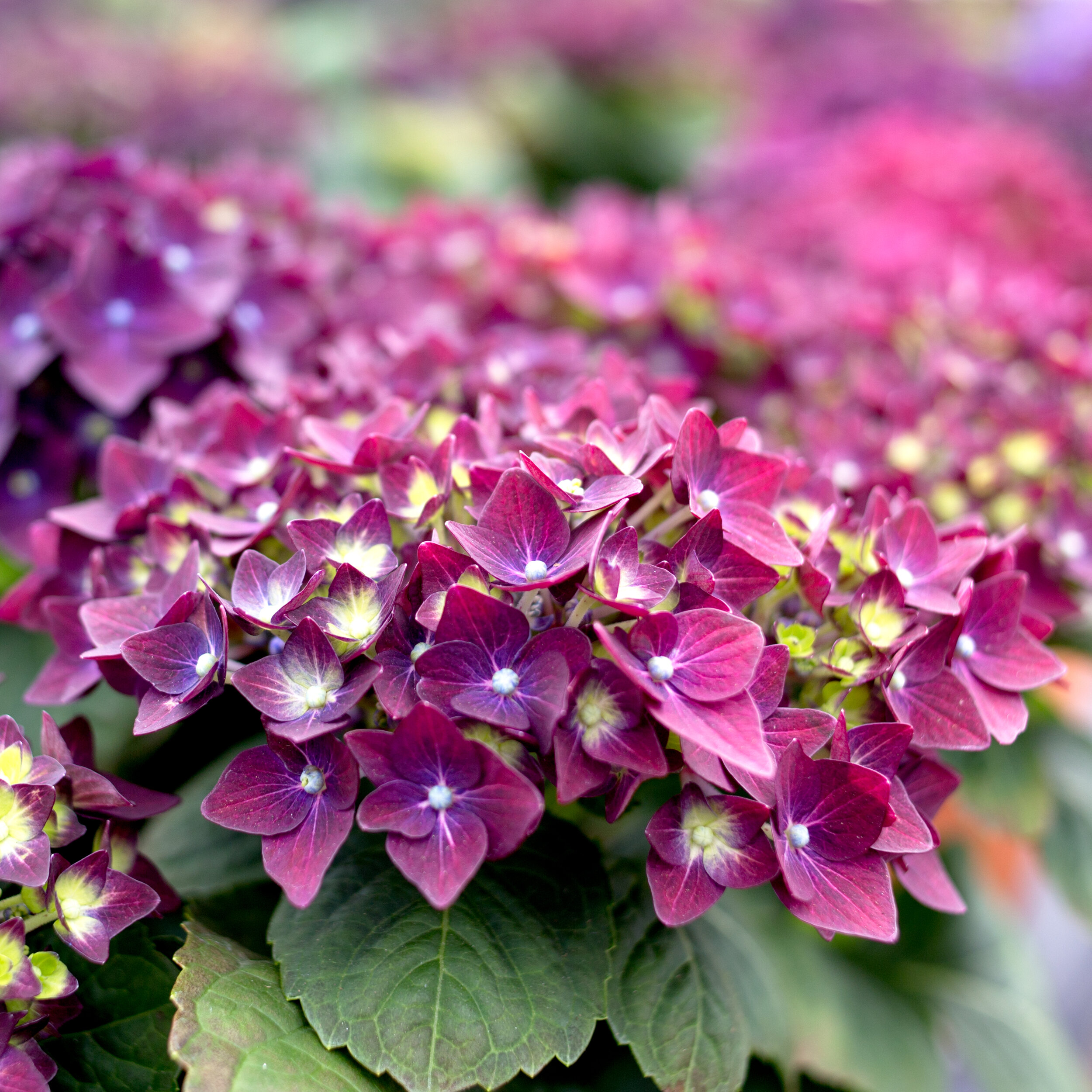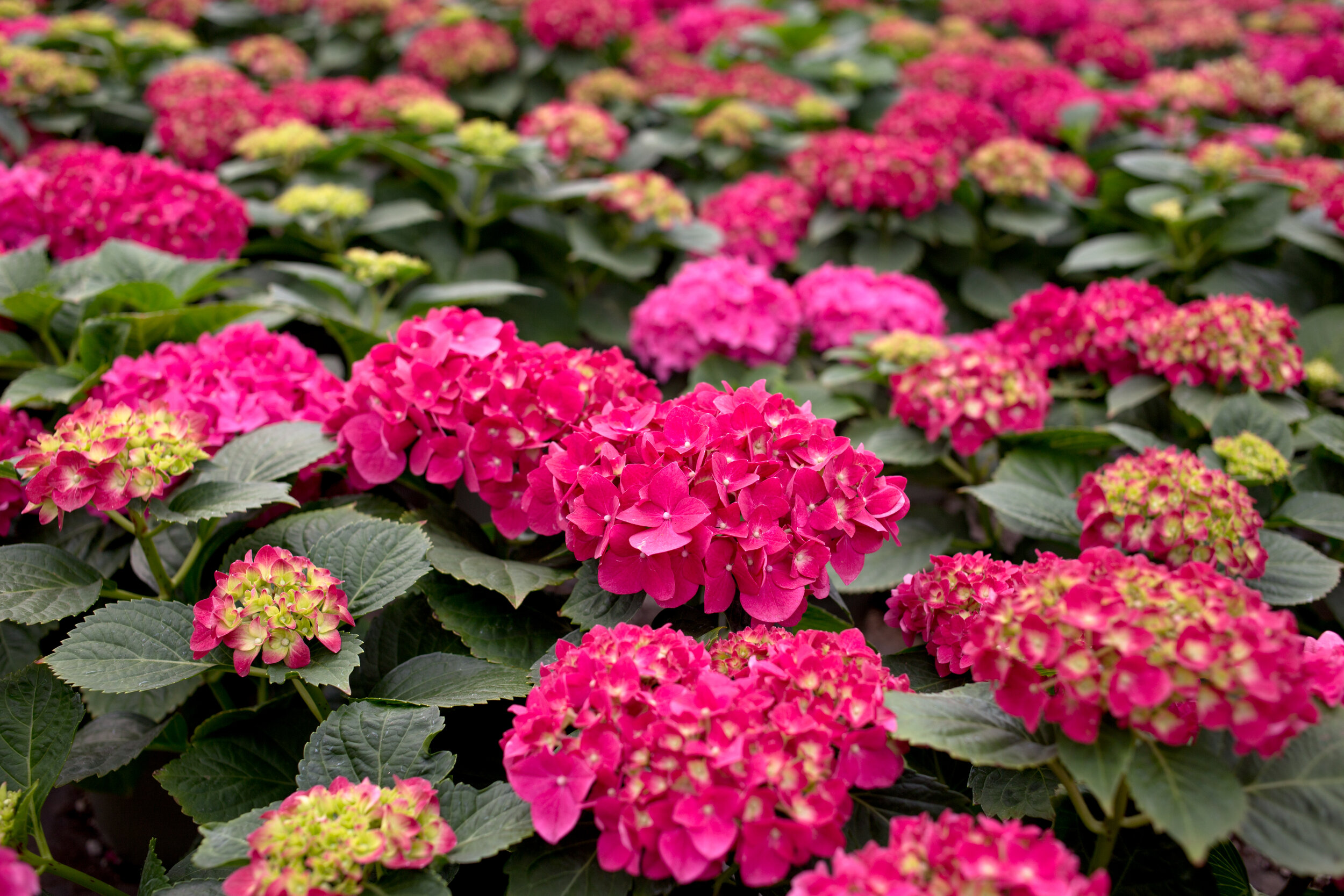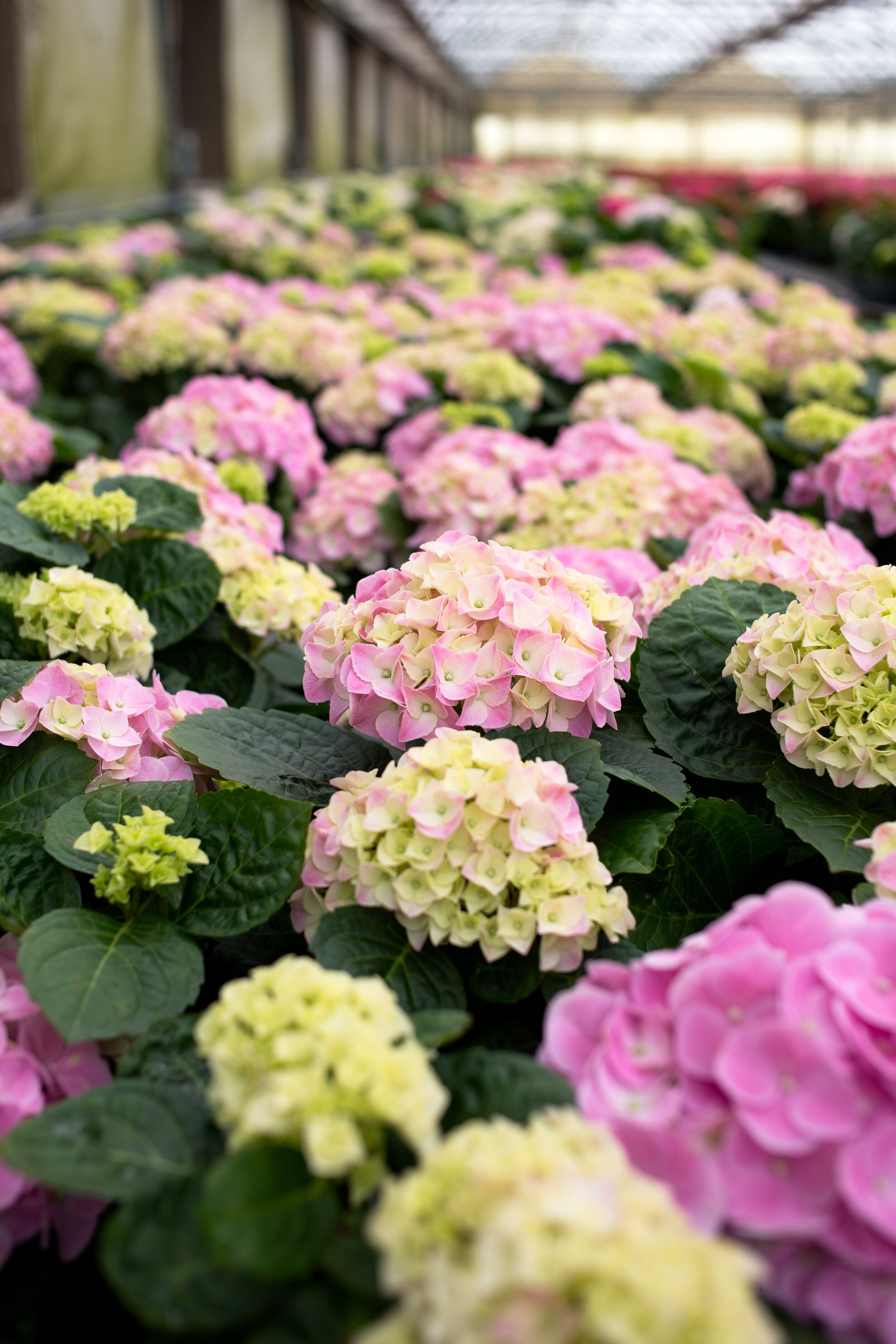Hydrangea
The Flower of
Gratitude & Sincerity
Hydrangeas, one of the most cherished flowers, blossom in well-tended gardens and grace floral arrangements around the world. They are undeniably beautiful with their big, pom pom flowerheads and large, lush green leaves. They come in a variety of colors ranging in hues of berry reds, vibrant purples, pretty pinks, vivid blues, graceful greens and snowy whites. Hydrangea is a flower sure to instantly lift spirits and bring joy to any home.
Hydrangea Care Line Classification
Care Information
Light
Place in a bright location. Near a sunny window is ideal, although hydrangeas can tolerate a wide range of light levels.
Temperature
Moderate home temperatures of 65-70°F daytimes, and 60-65°F nights. Avoid excessively hot or cold areas.
Water
Allow soil to dry between thorough waterings. Remove wrap or decor before watering. Drain off all excess water. Do not allow plants to stand in water.

The Hydrangea: Deep Dive
Season
February to August
Care
Place your potted hydrangeas in areas that receive morning sunlight and afternoon shade, for ultimate growth. Water potted hydrangeas regularly, as these plants require consistent water and fare poorly when too dry. Water the plant often enough that roots remain moist without maintaining wet soil, which may lead to disease problems (root rot). Irrigate when the top layer of soil feels dry to the touch. Check soil more than once on a daily basis until you are familiar with how often your plant needs water. It is best to take off the wrap/container and place in a sink before watering to allow the plant to drain from the bottom of the pot. Once the pot has drained completely, replace it to the original spot.
Home to Garden
Although hydrangeas are not terribly particular about the time of year they're planted, summer planting can be problematic in inland areas where the summers are bright and hot. For best results, plant hydrangeas in spring or fall, when temperatures are mild. Hydrangeas need well-draining soil and are best planted in a spot that gets morning sun and afternoon shade. Deep or constant shade is not suitable for hydrangeas, and neither is full sun. Pick a spot where your hydrangeas will be exposed to at least three to four hours of sun per day. Frequently water as it establishes its new spot. Check the soil often at first and do not allow the soil to become completely dry. Water at least twice a week then start to lengthen the amount of time between watering. Once the plant is established, you can allow the soil to become slightly dry between waterings, but be aware that hydrangeas are not drought-tolerant.
Flower Meaning
Hydrangeas symbolize sincere emotions, gratitude, and deep understanding. Although all colors of hydrangeas are equally beautiful, the flower’s symbolic meanings are very different. Blue hydrangeas represent feelings of remorse, understanding and deep gratitude. Red and pink carry connotations of heartfelt emotions, romance, and true feelings. Purple hydrangea flowers symbolize deep understanding without notions of regret or apology. Instead, the added meaning of gratefulness makes purple hydrangeas a wonderful flower for a friendship or an enduring relationship. In general, white flowers can be a symbol of purity and grace. Green hydrangeas represent prosperity, good fortune, good health, and youthfulness. Regardless of colors, these big and bold flowers make an equally big and bold statement for yourself or loved ones.
Fun Facts
Native to East Asia and North America, the hydrangea, also called hortensia, is a now enjoyed throughout the world. The name hydrangea comes from the Greek words hydros (water) and angos (jar or vessel). It is believed to have earned its name because the flower requires so much water to thrive. Although most varieties of hydrangeas contain toxins, some parts of the plants do have a history of medicinal use. For example, hydrangea rhizome and root have been indicated as a possible treatment for problems concerning the urinary tract. Hydrangea root extract may increase urination, improving the body’s ability to clear infections of the kidneys, bladder, and urinary tract. It might also help prevent kidney stones. In both Japan and Korea, people dry and brew the leaves of the Hydrangea, to make a sweet, herbal tea.
Although there is much beauty and medicinal usage to this classic flower, it might surprise you to find that not everything to do with the hydrangea was positive. This was especially true during the Victorian Era in Europe. As a result of the hydrangea’s tendency to produce abundant flowers but few seeds, rejected male suitors often gifted them (as an insult) to women for whom they had previously held affection. Additionally, women who grew them in their gardens were thought to be unlikely to find romantic companionship. Ouch!
